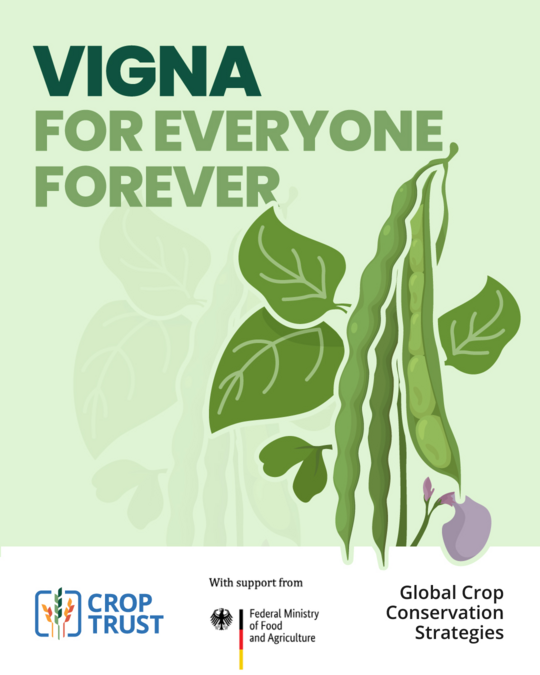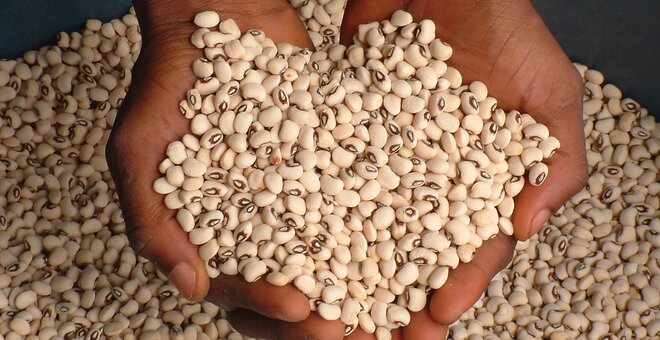The Crop Trust, along with its strategic partners, is developing conservation strategies to protect the genetic diversity of the world’s food crops. This initiative is funded by the German Federal Ministry of Food and Agriculture (BMEL).
Have you ever eaten koki, Hoppin' John, chè đậu trắng, lǜdòu tángshuǐ, amanattō, or lakhnapuri bhalle? If so, you have the Vigna genus to thank.
Vigna species are an important food in many parts of the world, especially Asia and Africa. The beans and pods can be eaten fresh or dried and stored. The seeds can be ground into pastes, or milled and made into noodles. The leaves and stalks of several Vigna species can be used as forage for livestock.
It’s a diverse group of crops, but that diversity is now being threatened by many factors, such as climate change, land-use changes and the loss of local varieties when farmers plant new, higher-yielding crops.
By saving seeds of Vigna in genebanks, we can continue using their diversity for breeding improved and resilient varieties.
A global conservation strategy, developed by the Crop Trust and our partners, ensures that future generations will be able to enjoy Vigna forever.
Did you know?
- More than 100 wild species are reported under the genus Vigna, and at present 10 domesticated species are cultivated as a vegetable or grain legume crop for human consumption.
- Vigna species are predominantly self-pollinating, often before the flower opens.
- Globally, domesticated Vigna species (crops) are cultivated across more than 25 million hectares of land annually, among which cowpea has the largest cultivation area, 14.5 million hectares, with a total annual grain production of 6.2 million metric tons.
- Mungbean has the second largest cultivation area with over 7.3 million hectares, whereas urdbean is cultivated over 5 million hectares.
- Other domesticated species, such as adzuki bean, creole bean, rice bean, moth bean and yardlong bean, are mostly cultivated in Asia. Bambara groundnut and tuber cowpea are predominantly cultivated in Africa.
- Some other popular products made from Vigna are: the transparent noodles made from mungbean starch that are common in China, and the mungbean paste that is used as an ingredient in the preparation of sweets in some parts of Asia.
- In East Asia Adzuki bean is culturally important because it is mixed with glutinous rice (red rice) on celebratory days.
Related stories about Vigna
Cowpea: How to Make a Hardy Crop Even Tougher
The cowpea keeps millions of people fed every day—but with the climate crisis threatening production, scientists are finding ways to increase its yields and hardiness.
“The cowpea has nourished people for many centuries,” said Ou...
19 May 2020
19 May 2020
Cowpeas in Nigeria Can Trace Ancestry to Genebanks
Take home messages
Four out of every 10 Nigerian cowpea farmers surveyed are growing an improved cowpea variety that can link its ancestry back to a genebank The use of improved varieties has not diminished the diversity...
7 Mar 2023



